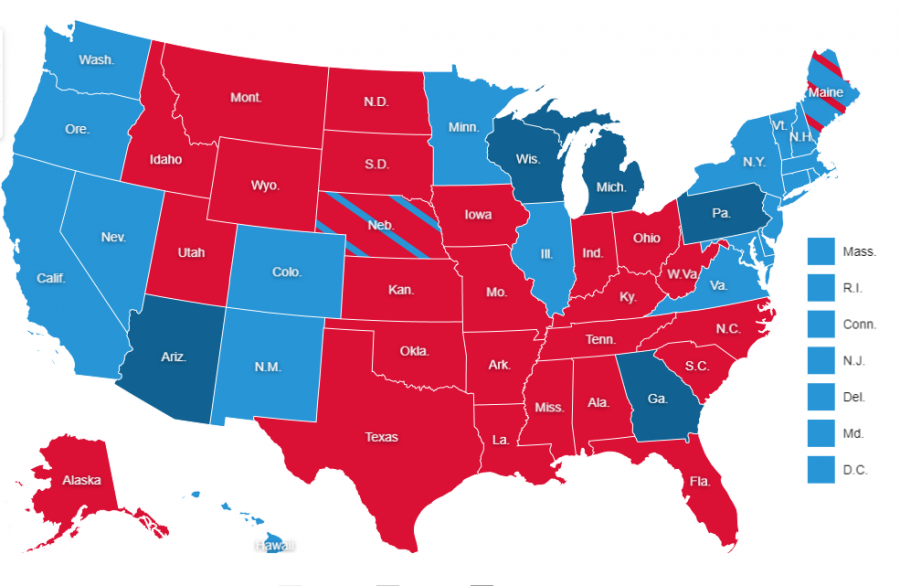THE ELECTORAL COLLEGE: HOW DOES IT WORK?
How America Elects her Presidents
With the election officially coming to an end, some of us might wonder how the President-elect comes to obtain his position. As a student of iUniversityPrep, you’ve probably learned about the election process from Mr. Hamrick’s History classes or Mrs. Holt’s Government courses.
You might have learned in your social studies or history classes that America is a democratic republic. This is different from a direct democracy in that the people of America elect representatives. These public officials are elected into their positions, where they make decisions on the behalf of American citizens. You might be thinking, “Why doesn’t the United States simply tally every single citizen’s vote and see which candidate wins?’
Well, things are not that simple. The United States is home to a staggering 330 million people. It would be impossible to count every single vote up to determine a winner. Nearly 2 centuries ago, our founding fathers determined that the sheer size of the country made it impossible to count every American’s individual vote. George Mason, a contributor to the U.S. Constitution and an early American politician, referenced this in the late 1770s.
Due to the dense population of America, the electoral college was implemented, and to this day, determines the quadrennial Presidential election.
So, what exactly IS the Electoral College? In simple terms, the electoral college is America’s method for electing the President. Americans don’t vote directly for a presidential candidate, they vote for electors. These electors make up the Electoral College. There are 538 members in the Electoral college: there is one member for each U.S. senator and representative, and three additional electors to represent the District of Columbia.
States have a set number of electoral votes. Each state begins with 3 votes, and further numbers of votes are determined by population. This is why some larger states have less votes than smaller states. For example, Alaska, the largest state in the US, has a mere 3 votes, while Florida, a significantly smaller state, has 29. The higher the population, the higher the amount of electoral votes. Here in the state of Texas, with a population of over 29 million citizens, we have the second highest amount of votes: 38. These states mostly elect members of the Electoral College through popular vote.
A presidential candidate must win at least 270 of these electoral votes to secure the presidency. This is a race of both time and ballots. The first candidate to reach 270 votes wins the presidency.
Now you know how the President of the United States is elected! During the next Presidential election of 2024, you can follow along and understand how the election process works.
Sources:
Gov, USA. “Presidential Election Process.” USAGov, 13 July 2020, www.usa.gov/election.
CGPGrey. “How the Electoral College Works.” YouTube, YouTube, 7 Nov. 2011, www.youtube.com/watch?v=OUS9mM8Xbbw.
Williams, Ben. The Electoral College, 11 Nov. 2020, www.ncsl.org/research/elections-and-campaigns/the-electoral-college.aspx.

Hi guys! My name is Nhi Nguyen and I'm a Senior this year at iUniversity Prep. This is my first year in iHoot and I'm so excited to be the editor for the...







